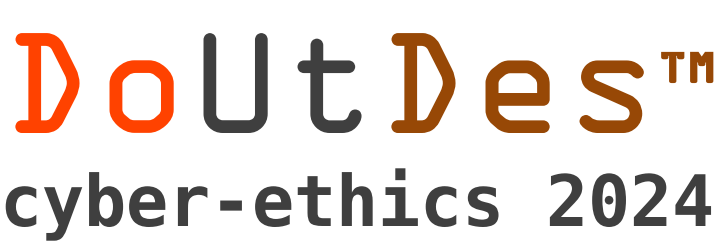Cyber-Ethics & Human Rights
Why is human rights a pivotal part of the multi-functional systemic DoUtDes™ Cyber-Ethics framework?
First, because risk-based approaches or resilience perspectives developed by recent regulations (EU AI ACT, the upcoming Cyber Resilience Act or the EU Cyber Solidarity Act) to fast-paced technologies, be it artificial intelligence, generative AI, industrial or collaborative robotics, conversational human-interfacing technologies or brain-computer interfacing based on high-risk neurotech, bio-engineering, neuromorphic computing or genomics have generated solid challenges if not threats to many of our fundamental human rights, beyond ethical concerns.
Second, the harms caused by emerging technologies like generative AI or immersive AR/VR have engendered a novel set of harms compared to the “classical” ethical “black box” harms like bias, discrimination, gender and race inequalities, or the recent hallucinations leading to mis- and disinformation. Large language models or brain computer interfacing and even future robotics fueled by transformer technologies like the unreliable ChatGPT have already triggered “invisible” large latent harms which slowly erode the foundations of humanness and societies as we know them.
Third, beyond to the fundamental rights to life, liberty, privacy, or the right to free expression, and freedom of thinking, we at DoUtDes™ Cyber-Ethics focus on a very basic right to cyber Safety for each and everybody. IT Security and human Safety are two sides of the 360°cyber Intelligence coin; but mostly Safety is eclipsed in favor of over-complexified ad hoc security systems which prove to be inefficient.A system might be secure, yet people’s safety might not benefit from a 360° shield.
That’s why the DoUtDes™ Cyber-Ethics framework offers a systemic and multi-functional perspective on cyber security leaning on 360° cyber Intelligence. A bi- or multi-directional interplay between ” embedded ethics and human rights”, “Safety by Design” and “Business Intelligence”.


